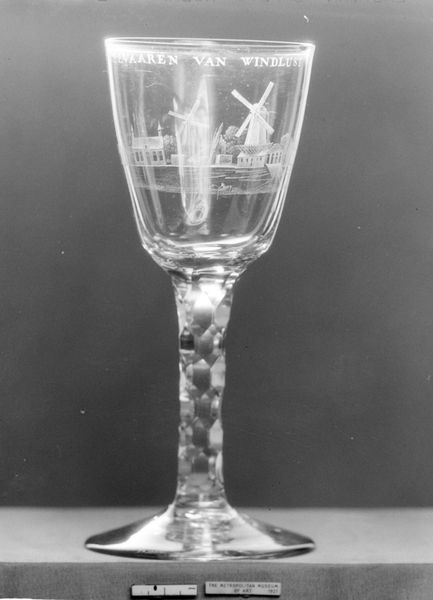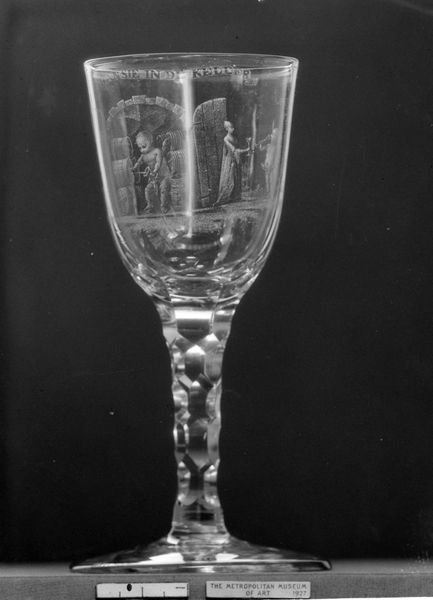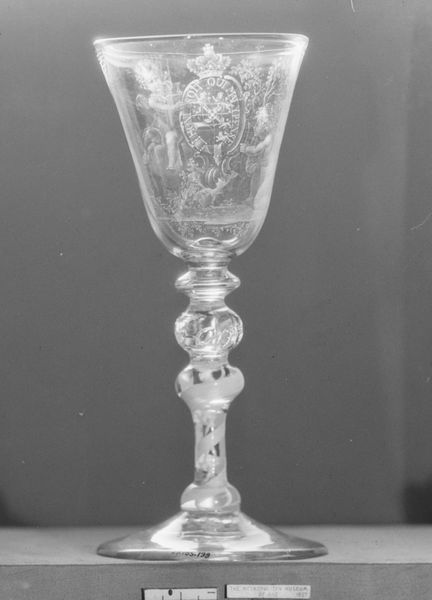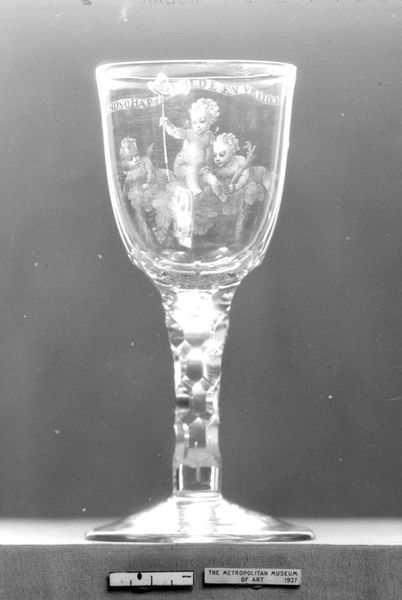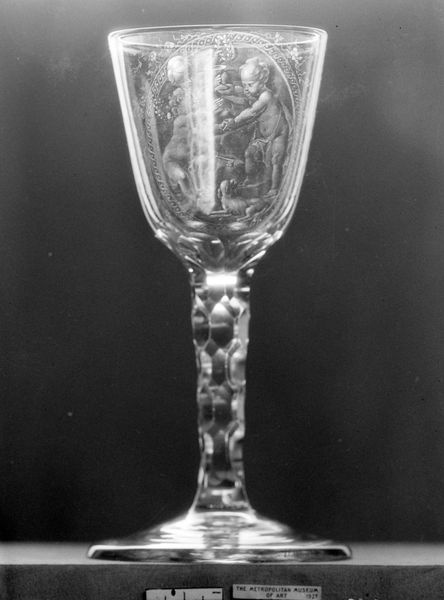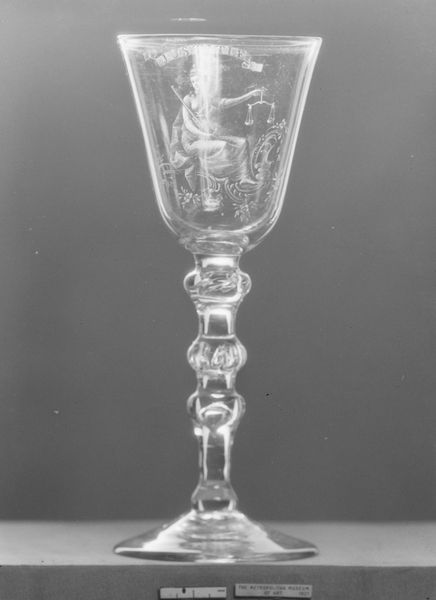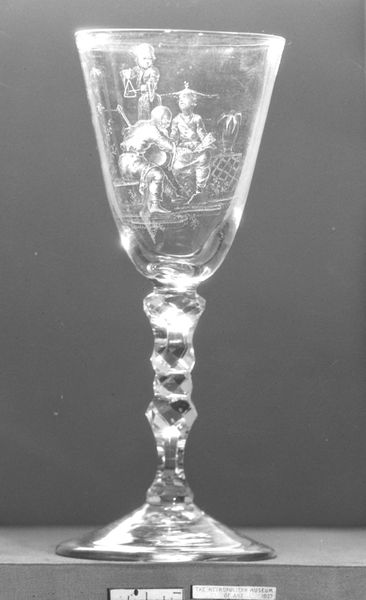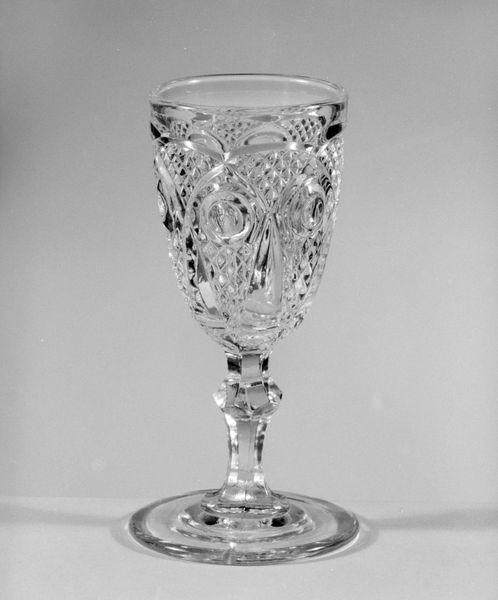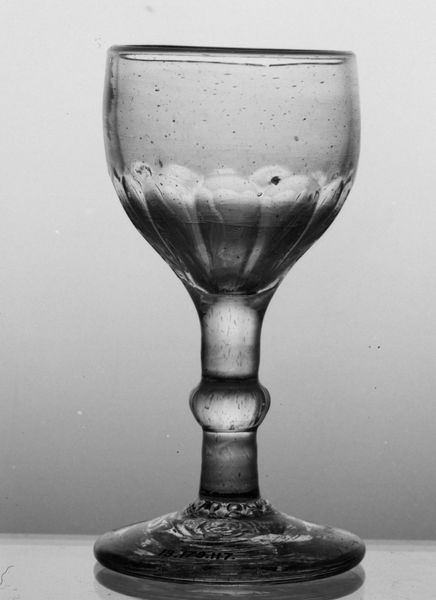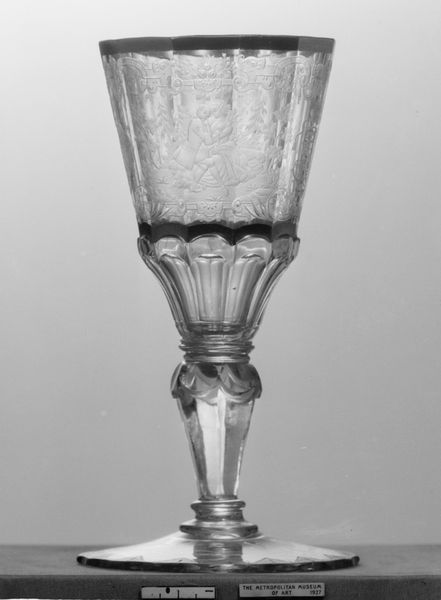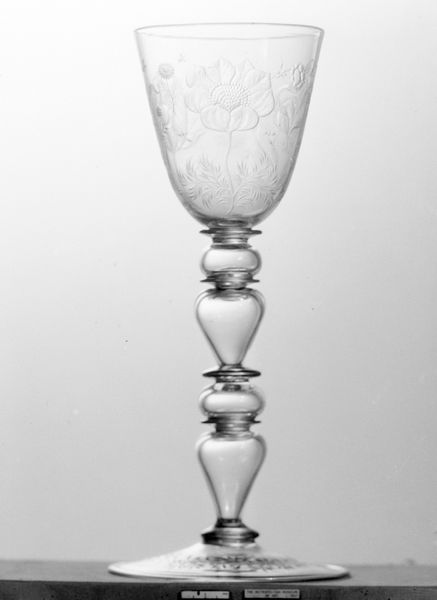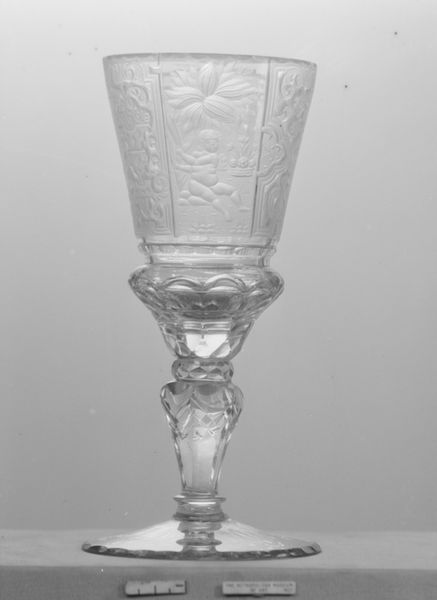
glass, sculpture
#
glass
#
sculpture
#
decorative-art
Dimensions: Overall: 8 3/8 × 3 1/2 in. (21.3 × 8.9 cm)
Copyright: Public Domain
Curator: Here we have a truly magnificent piece: a glass "Wineglass" crafted in 1762. It resides here at the Metropolitan Museum of Art. Look at how its refined lines contrast against the bold declaration etched into its surface. Editor: Yes, it seems rather severe doesn't it? So tall, almost austere. The light passing through gives the etched ornamentation a ghostlike presence against the solidity of the glass. It feels strangely imposing for a simple drinking vessel. Curator: Its imposing character reflects its purpose. It’s no accident that it echoes the power and visual language of heraldry, reflecting the symbols and socio-political climate of its time. This would have signaled elevated status. The presence of a crown might also signify an allegiance, potentially connecting the owner to a ruling house or specific political agenda. Editor: You're right, the ornate engraving near the top gives it weight and symbolic meaning, but consider how this impacts its readability; this ornate embellishment makes the stem the clear focus, creating a complex, almost baroque silhouette. It gives the glass a certain gravitas, despite its inherent fragility. Curator: Indeed, the deliberate contrast between delicacy and authority is a potent commentary on class and ownership in 18th-century society. Something seemingly simple like a wine glass becomes a symbol laden with meaning about consumption, privilege, and display of wealth. Editor: The artist, William Fortuyn, had a real understanding of balance—a mastery of clear, undecorated lines punctuated by moments of intricate detailing. It elevates the simple glass form. I find the interplay with light and shadow fascinating; I’m curious about what you think that tension symbolizes. Curator: I would say that this visual complexity reveals much about the cultural dynamics of its era, in which decorative arts served not just a utilitarian purpose, but played a pivotal role in asserting social distinctions and allegiances. Editor: The careful manipulation of form creates an undeniable aesthetic presence. Regardless of what's reflected, the inherent artistic qualities resonate to this day. Curator: It makes me ponder what narratives the owner had hoped it would communicate. Editor: Or, how we impose our own narratives. Food for thought!
Comments
No comments
Be the first to comment and join the conversation on the ultimate creative platform.
